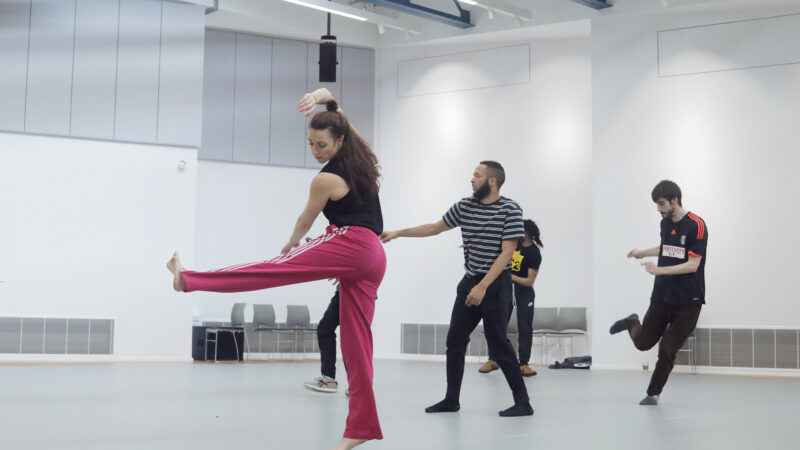Shane’s Revelations
Shane shares some of the writing, people, places and films that have inspired him – there’s even a short quiz!
The Natyashastra
The NāṭyaŚāstra is a Sanskrit text on the performing arts. It is an ancient encyclopaedic treatise on the arts,one which has influenced dance, music and literary traditions in India.The first complete compilation is dated to between 200 BCE and 200 CE, but estimates vary between 800 BCE and 500 BCE.
The text consists of 36 chapters with a cumulative total of 6000 poetic verses describing performance arts. The subjects covered by the treatise include dramatic composition, the structure of a play and the construction of a stage to host it, genres of acting, body movements, makeup and costumes, the musical scales, musical instruments and the integration of music with art performance.
My entire creative explorations specifically the direction of travel in drama and theatre principles has been guided by this body of the text. It is vast and will be a source of knowledge and inspiration for my lifetime.
Bridges
Bridges are such beautiful architectural structures. The designs, the variety and most importantly its purpose, that of connecting one or more places together. This for me is its greatest beauty. A structure which is built to span a physical obstacle, without closing the way underneath. This is something that inspires me both in my work and life. I love standing on bridges, that space in-between, just like the stage where I feel most liberated and connected.
Here are seven bridges I have visited.
See if you can figure out the country and city?

Answers
A.Golden Gate Bridge, San Fransisco, USA
B.Sydney Harbour Bridge, Sydney, Australia
C.Bosphorous Bridge, Istanbul, Turkey
D. Bandra-Worli Sea Link, Mumbai, India
E.Brindley Place, Birmingham, UK
F.Brooklyn Bridge, New York, USA
G.Stari Most, Mostar, Bosnia & Herzegovina
Stuart Hall
I came to know of and read about Stuart Hall much later in my life. However, everything he has said about arts and culture I resonate with so deeply. His theories and thinking opened up my understanding of re-presentation and what that means to me and it constantly inspires me to be strong in who I am and why I do what I do.
StuartHall was a Jamaican-born cultural theorist and political activist. He was one of the founding figures of the school of thought that is now known as British Cultural Studies. He became the director of The Centre for Contemporary Cultural Studies in 1972. While at the Centre, Hall is credited with playing a role in expanding the scope of cultural studies to deal with race and gender, and with helping to incorporate new ideas derived from the work of French theorists like Michel Foucault. British newspaper The Observer called him “one of the country’s leading cultural theorists” Hall was also involved in the Black Arts Movement.
Rukmini Devi-Arundale
Rukmini Devi-Arundale systematically reformed Bharatanatyam, which was originally named ‘Sadhir’ or ‘Dasiattam‘, which belonged to a community called ‘Devadasi’. The art form and the community it belonged to had fallen into disrepute because the British, during their colonial rule, deemed ‘Sadhir’too vulgar to be considered an art form. Rukmini Devi-Arundalelearnt ballet first, from Anna Pavlova and then learnt ‘Sadhir’from the community with the sight to profiling Indian arts and culture. Over several years she re-formed ‘Sadhir’ and it was re-named Bharatanatyam. This, in turn, disassociated the art form from the devadasi community to whom this practice belonged to. In making these reforms, Rukmini Devibrought this art form to the world stage and acceptable to the British and the elite of Indian society by removing aspects of eroticism.
Although I recognise the inequality and hierarchical structures created by taking from a community and reforming the practice to present a more acceptable version for the British and elite, it is her strength of vision and courage to take such a bold step that is inspiring. She followed her passion to discover a renewed identity for the arts and culture of the newly independent India. I am deeply upset that the art form has been dissected by the devadasi community. This separation was driven by a number of political agendas from varying groups of people at the time.
As a curious person, I would like to know how the art form would have continued evolving from within the Devadasi community.There were many complexities during that time, however, history has led us to this point in time and for me, Rukmini Devi triggers a creative drive and desire in me to continue the renewed Bharatanatyam’s journey by following my own passion to discover a renewed identity for Bharatanatyam within the diaspora, but not just the Asian diaspora all diasporas.
Please note: This short documentary is quite old!
I am fortunate that my family are supportive of my artistic life. Although, it took some time for them to come around. I had to endure the whole “when are you going to get a proper job?” phase. But now, my immediate family have been very supportive but most of all my incredible wife, Deniz Soezen, who is a visual artist. She is a continuous stream of inspiration for me and a pillar of strength. She is my constant sounding board and helps me to be the best version of myself, both in my work and life.
Take a look at Deniz Soezen work













